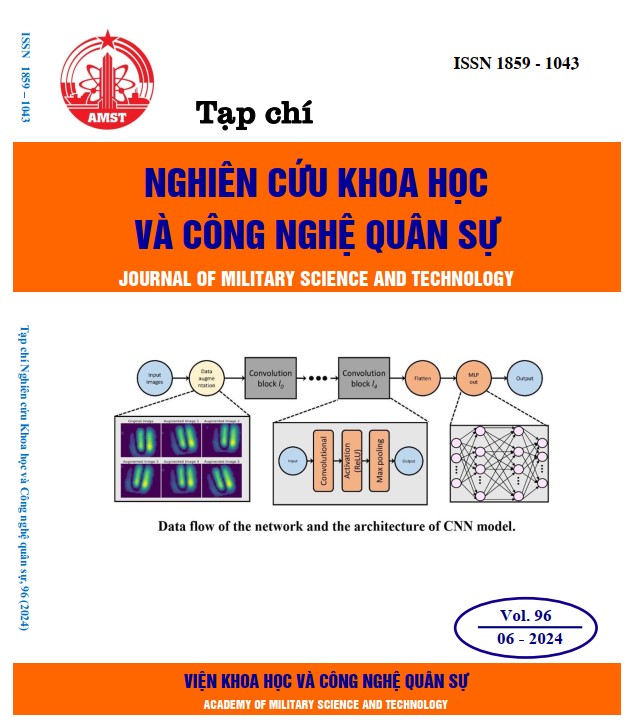Ablation dosage recommendation for thyroid cancer treatment following thyroidectomy using machine learning
601 viewsDOI:
https://doi.org/10.54939/1859-1043.j.mst.96.2024.137-144Keywords:
Thyroid treatment; Machine learning; Decision tree.Abstract
This article presents an innovative approach to ascertain the most effective ablation dosages for thyroid cancer treatment following thyroidectomy. The methodology utilizes Decision Trees and places significant emphasis on the interpretability of medical decision-making. By incorporating clinical data and the Radioactive Scan Index (RSI) into Decision Tree algorithms, our methodology offers transparent treatment planning insights. By means of a case study, we illustrate the function of Decision Trees in clarifying pivotal elements that impact dosage recommendations for ablation, thereby enabling medical practitioners to make well-informed decisions. This study emphasizes the importance of decision explainability in the optimization of treatment strategies for thyroid cancer, ultimately leading to enhanced patient care and treatment outcomes.
References
[1]. Patro, S.; Sahu, K. K. “Normalization: A preprocessing stage”. arXiv preprint arXiv:1503.06462, (2015), DOI: https://doi.org/10.17148/IARJSET.2015.2305
[2]. Hancock, J. T.; Khoshgoftaar, T. M. “Survey on categorical data for neural networks”. Journal of Big Data, 7, 1–41, (2020). DOI: https://doi.org/10.1186/s40537-020-00305-w
[3]. Scikit-learn: Decision Tree Classifier.
https://scikitlearn.org/stable/modules/generated/sklearn.tree.DecisionTreeClassifier.html#sklearn.tree. DecisionTreeClassifier.
[4]. Campbell, S. L.; Gear, C. W. “The index of general nonlinear DAES”. Numer. Math., 72, 173–196, (1995). DOI: https://doi.org/10.1007/s002110050165
[5]. Murtagh, F. “Multilayer perceptrons for classification and regression”. Neurocom- puting, 2, 183–197, (1991). DOI: https://doi.org/10.1016/0925-2312(91)90023-5
[6]. Freund, Y.; Schapire, R.; Abe, N. “A short introduction to boosting”. Journal- Japanese Society For Artificial Intelligence, 14, 1612, (1999).
[7]. Browne, M. W. “Cross-validation methods”. Journal of mathematical psychology, 44, 108–132, (2000). DOI: https://doi.org/10.1006/jmps.1999.1279
[8]. Breiman, L. Random forests. “Machine learning”, 45, 5–32, (2001). DOI: https://doi.org/10.1023/A:1010933404324
[9]. Bradley, A. “The use of the area under the ROC curve in the evaluation of machine learning algorithms”. Pattern recognition, 30(7), 1145–1159, (1997). DOI: https://doi.org/10.1016/S0031-3203(96)00142-2
[10]. Auria, L., & Moro, R. “Support vector machines (SVM) as a technique for solvency analysis”, (2008). DOI: https://doi.org/10.2139/ssrn.1424949
[11]. Mucherino, A., Papajorgji, P., Pardalos, P., Mucherino, A., Papajorgji, P., & Pardalos, P. “K-nearest neighbor classification”. Data mining in agriculture, 83–106, (2009). DOI: https://doi.org/10.1007/978-0-387-88615-2_4
[12]. Ellson, J., Gansner, E., Koutsofios, E., North, S., & Woodhull, G. “Graphviz and dynagraph—static and dynamic graph drawing tools”. Graph drawing software, 127–148, (2004). DOI: https://doi.org/10.1007/978-3-642-18638-7_6
[13]. Bryan R Haugen et al “2015 American Thyroid Association Management Guidelines for Adult Patients with Thyroid Nodules and Differentiated Thyroid Cancer: The American Thyroid Association Guidelines Task Force on Thyroid Nodules and Differentiated Thyroid Cancer” PMID: 26462967 PMCID: PMC4739132 DOI: 10.1089/thy.2015.0020. DOI: https://doi.org/10.1089/thy.2015.0020







